Does My Child Have Autism?
Understanding Autism Spectrum Disorder: A Guide for Parents
Your Essential Guide to Recognizing and Understanding Autism
Autism Spectrum Disorder (ASD) is a complex neurodevelopmental condition that affects how children communicate, behave, and interact with others. Early recognition of signs and symptoms can significantly improve outcomes through timely intervention. This comprehensive guide explores the common signs of autism, how to recognize early indicators, the diagnostic process, screening tools, potential causes, and practical steps for parents concerned about their child's development.
Signs and Symptoms of Autism Spectrum Disorder
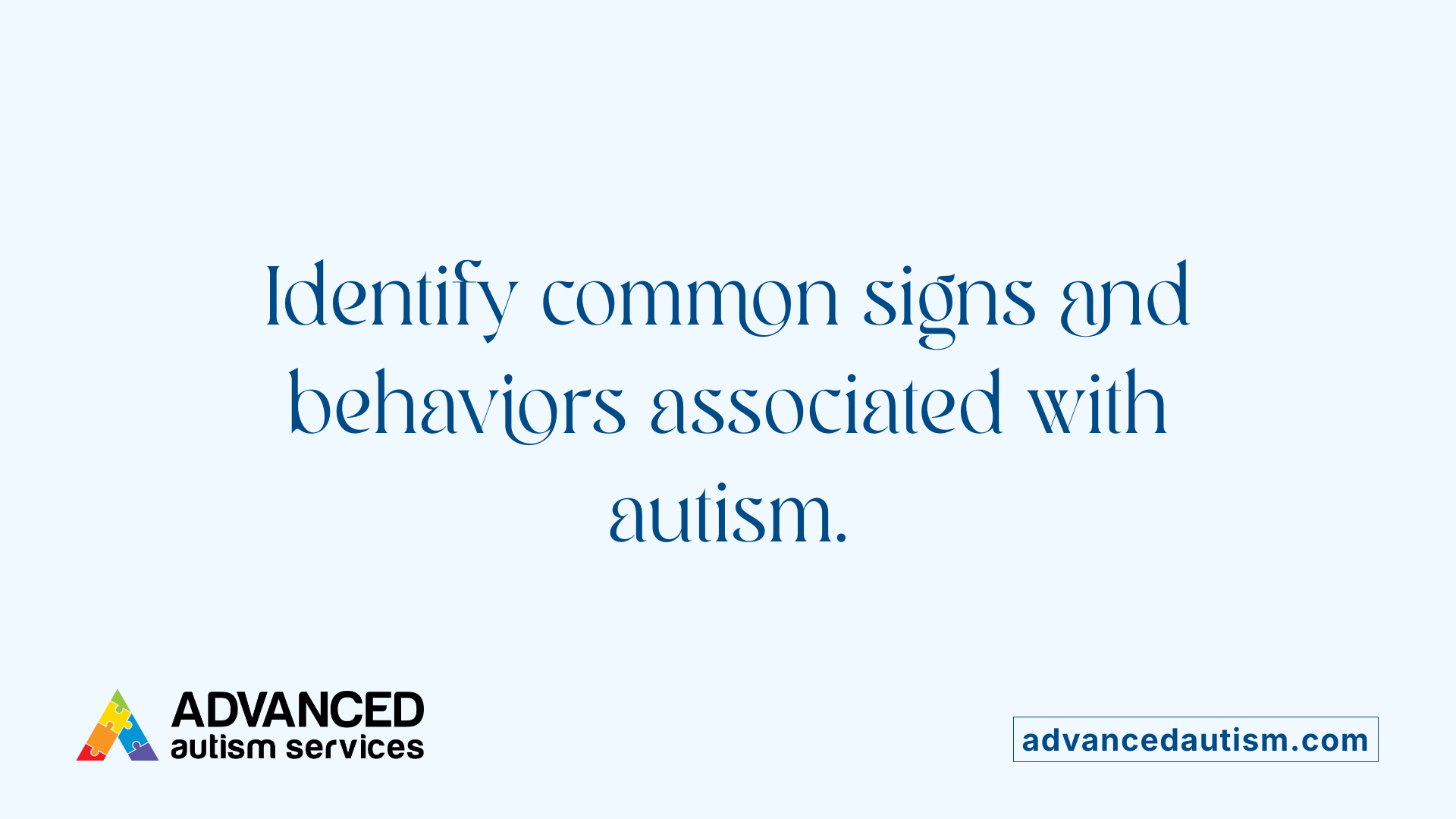
What are the common signs and symptoms of autism spectrum disorder?
Autism spectrum disorder (ASD) presents with a diverse range of signs and symptoms that can vary widely among individuals. One of the most noticeable features is difficulty with social interaction. Children and adults with ASD often avoid eye contact, which is one of the earliest signs. They might not respond when called by name or show limited interest in sharing their interests or emotions. It can be challenging for them to interpret social cues, body language, or facial expressions.
Communication challenges are also prominent. Many children experience delayed speech development, and some may never develop verbal communication. Others might use unusual speech patterns, such as repeating phrases—known as echolalia—or develop an abnormal tone of voice. They might also have fewer gestures, such as waving or pointing, and may find it hard to understand or use body language effectively.
Repetitive behaviors and that adherence to routines are hallmark signs. Children and adults often engage in repetitive movements like hand-flapping, rocking, or spinning. They may line up toys or objects meticulously and resist any changes in their daily schedule or environment, becoming upset if routines are disrupted.
Restricted interests are another core aspect. Many individuals develop intense focus on specific topics, objects, or activities and may dedicate long periods to these interests. For example, some might have a fascination with trains, numbers, or certain parts of objects.
Sensory sensitivities are common in ASD as well. People might be overly sensitive to certain sounds, lights, textures, or smells, leading to distress or avoidance behaviors. Conversely, some individuals may seem less responsive to stimuli, such as not reacting to loud noises or changes in temperature.
Recognizing these signs early can lead to timely diagnosis and intervention, significantly improving social, behavioral, and communication skills. While each person with ASD is unique, these common traits help in identifying and understanding the condition.
Recognizing Early Indicators of Autism
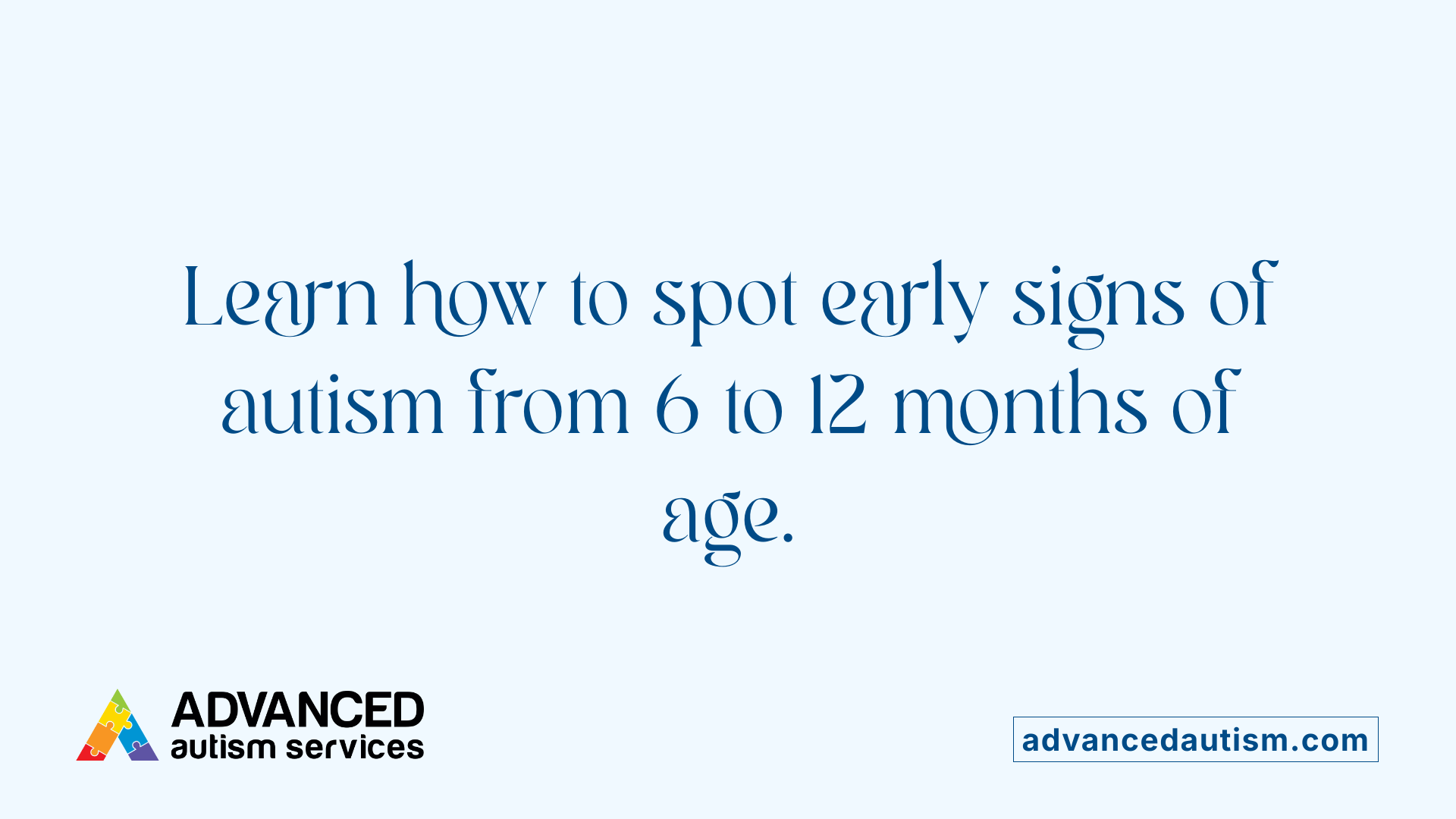
How can parents recognize early indicators of autism in children?
Parents often notice early signs of autism between 6 and 12 months of age. These signs include a lack of eye contact, not responding when called by name, and delayed speech development. For example, a baby who does not seem to acknowledge their name or make eye contact during interactions may be showing early signs.
In addition to these, limited gestures like pointing, waving, or sharing interest in objects can signal developmental differences. Repetitive behaviors such as hand-flapping, rocking, or lining up toys may become evident within the first year.
Social sharing difficulties are notable; for instance, a child may not smile back when smiled at, or not seek comfort from caregivers. Challenges with joint attention—focusing on an object or person together—are key markers. Children who do not follow a point to look at a toy or do not share interest with others can be showing signs.
Sensory sensitivities are also common, with some children reacting intensely or unusually to sights, sounds, or textures. Resistance to routine changes, such as upset when a daily schedule is altered, and potential loss of skills once mastered are additional signs to watch for.
If multiple signs are present, especially together, it's important to seek professional evaluation. Early detection and intervention can significantly improve developmental outcomes. Parents should consult their pediatrician if they observe any of these behaviors or concerns, as early screening can lead to supportive therapies tailored for the child's needs.
The Diagnosis Process for Autism Spectrum Disorder
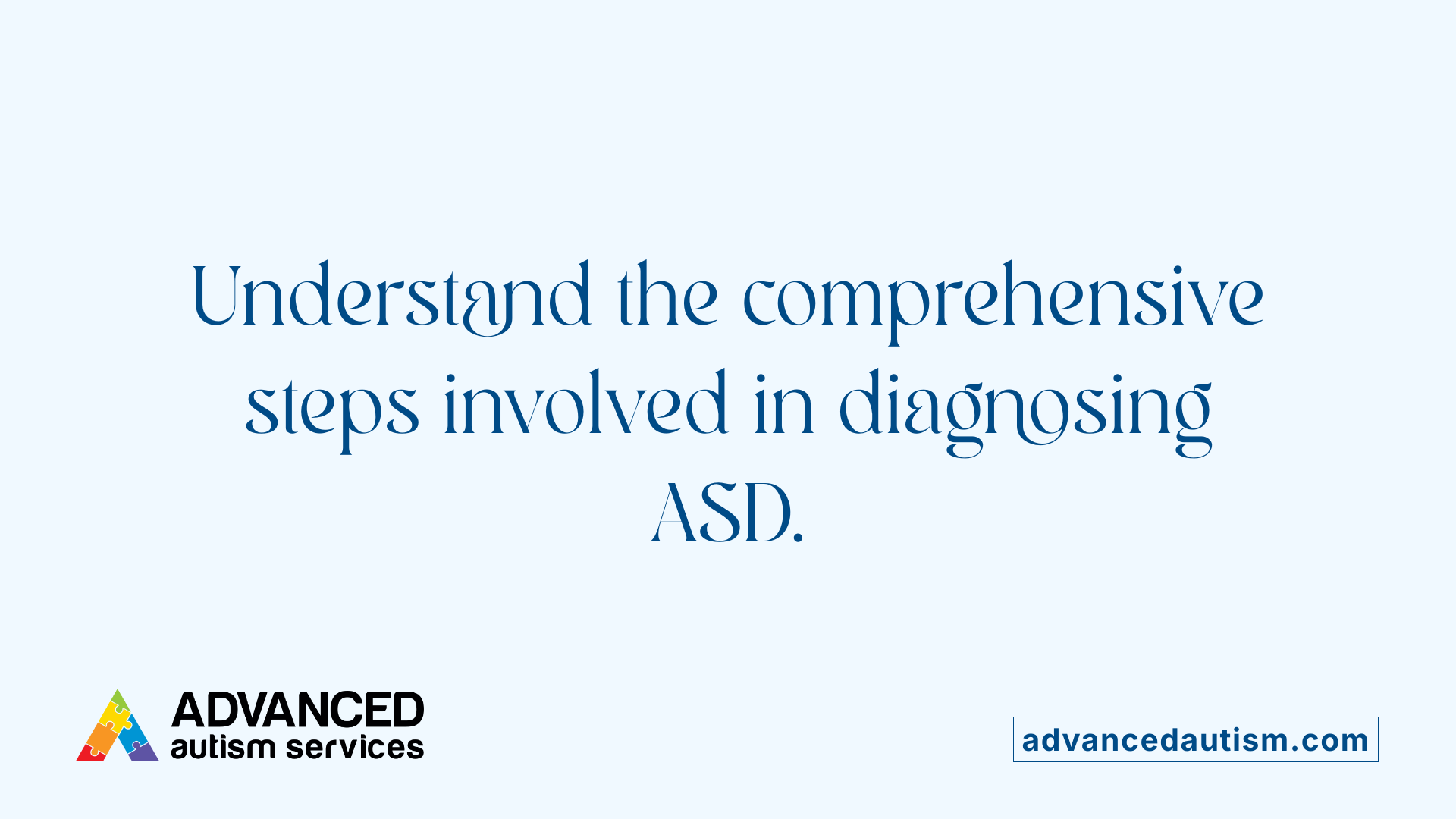
What is the process for diagnosing autism spectrum disorder?
Diagnosing autism spectrum disorder (ASD) is a detailed process that involves several steps designed to identify behavioral and developmental characteristics consistent with the condition.
Initially, developmental screening is performed, usually during routine check-ups with primary care providers. These screenings, like the Modified Checklist for Autism in Toddlers (M-CHAT) or Ages and Stages Questionnaires (ASQ), are quick questionnaires completed by parents or caregivers. They are typically administered at recommended ages such as 9, 18, and 24-30 months. These tools help identify children who may be showing signs of autism and need further assessment.
If screening results suggest a potential autism diagnosis, a comprehensive evaluation is conducted by a multidisciplinary team. This team often includes psychologists, developmental pediatricians, or child psychiatrists. Their task is to thoroughly observe and assess the child's behavior, social skills, communication, and overall development.
The evaluation process involves several components:
- Behavioral Observations: The clinicians observe the child's responses during play and social interactions.
- Standardized Diagnostic Tools: Instruments like the Autism Diagnostic Observation Schedule (ADOS-2), Autism Diagnostic Interview-Revised (ADI-R), and Childhood Autism Rating Scale (CARS) are utilized to systematically assess behavioral patterns and compare them to diagnostic criteria.
- Developmental and Medical History: Gathering detailed histories from parents or caregivers about the child's overall development, behavior patterns, and sensory responses.
Medical tests are not primarily used to diagnose autism but may be performed to rule out other conditions or identify co-occurring medical issues.
The final diagnosis hinges on the integration of observations, assessments, and developmental history aligned with the DSM-5 criteria for autism. Once diagnosed, a tailored plan for support and intervention can be implemented to help the individual develop essential skills and manage challenges.
Screening Tools and Assessments for Autism

Are there screening tools or assessments available for early detection of autism?
Yes, there are several tools designed to help identify autism spectrum disorder (ASD) early in a child's development. These assessments are usually conducted during routine healthcare visits and are crucial for catching signs of autism so that intervention can begin promptly.
One common type of screening involves questionnaires filled out by parents or caregivers. The Modified Checklist for Autism in Toddlers (M-CHAT) is widely used for children between 16 and 30 months old. It asks about behaviors associated with autism, such as response to name, eye contact, and interest in objects. Other parent-completed forms include the Ages and Stages Questionnaire (ASQ) and the Survey of Well-Being of Young Children (SWYC). These tools are designed to be quick and accessible, providing an initial risk assessment.
In addition to questionnaires, healthcare providers use observational tests to assess a child's behavior directly. Tests like the Screening Tool for Autism in Toddlers and Young Children (STAT) and the RITA-T (Revised, Infant Toddler Checklist) involve clinical observation and interaction to evaluate social communication and play skills. These assessments help clinicians identify developmental delays and social deficits characteristic of autism.
It’s important to understand that while these screening tools are useful for early detection, they do not provide a definitive diagnosis. Confirming autism requires comprehensive evaluation by specialists, often involving behavioral observation, developmental history, and diagnostic criteria like those in the DSM-5.
Early detection is vital because it enables access to interventions that can improve social, behavioral, and communication skills. Research shows that starting support before age 3 can lead to better long-term outcomes for children at risk.
For parents concerned about their child's development, discussing screening options with their pediatrician is a proactive step. These assessments are safe, non-invasive, and an important part of monitoring a child's growth and development.
More information about autism screening tools for early detection can be found through searches like "Autism screening tools for early detection." Practical resources and guidelines from health authorities can assist parents and providers in understanding and utilizing these tools effectively.
Understanding Causes and Risk Factors of Autism

What are the potential causes or factors associated with autism spectrum disorder?
Autism spectrum disorder (ASD) is believed to result from a combination of genetic and environmental factors. While the exact cause remains unknown, research indicates several influences that can increase the likelihood of developing autism.
Genetic contributions play a significant role. These include variations or mutations in different genes, some inherited and others occurring spontaneously. Certain genetic conditions like fragile X syndrome and Rett syndrome are also associated with autism. Family history of autism or other neurodevelopmental disorders further increases risk, highlighting a hereditary component.
Environmental influences are equally important. Factors during pregnancy such as maternal infections, exposure to certain medications, or air pollution have been studied as possible contributors. Complications during birth, like prematurity or low birth weight, also appear linked to increased autism risk. Additionally, maternal health issues, including gestational diabetes or hypertension, may influence brain development.
Certain parental factors, such as older parental age at childbirth, are associated with higher chances of autism in children. Other environmental factors under investigation include exposure to toxins, chemicals, or viral infections during critical developmental periods.
Overall, multiple genetic and environmental factors interact in complex ways to influence the development of ASD. While ongoing research continues to uncover specific mechanisms, current evidence underscores that these factors combined can increase susceptibility, though no single cause has been definitively identified.
Determining if Your Child Might Have Autism Based on Behavior
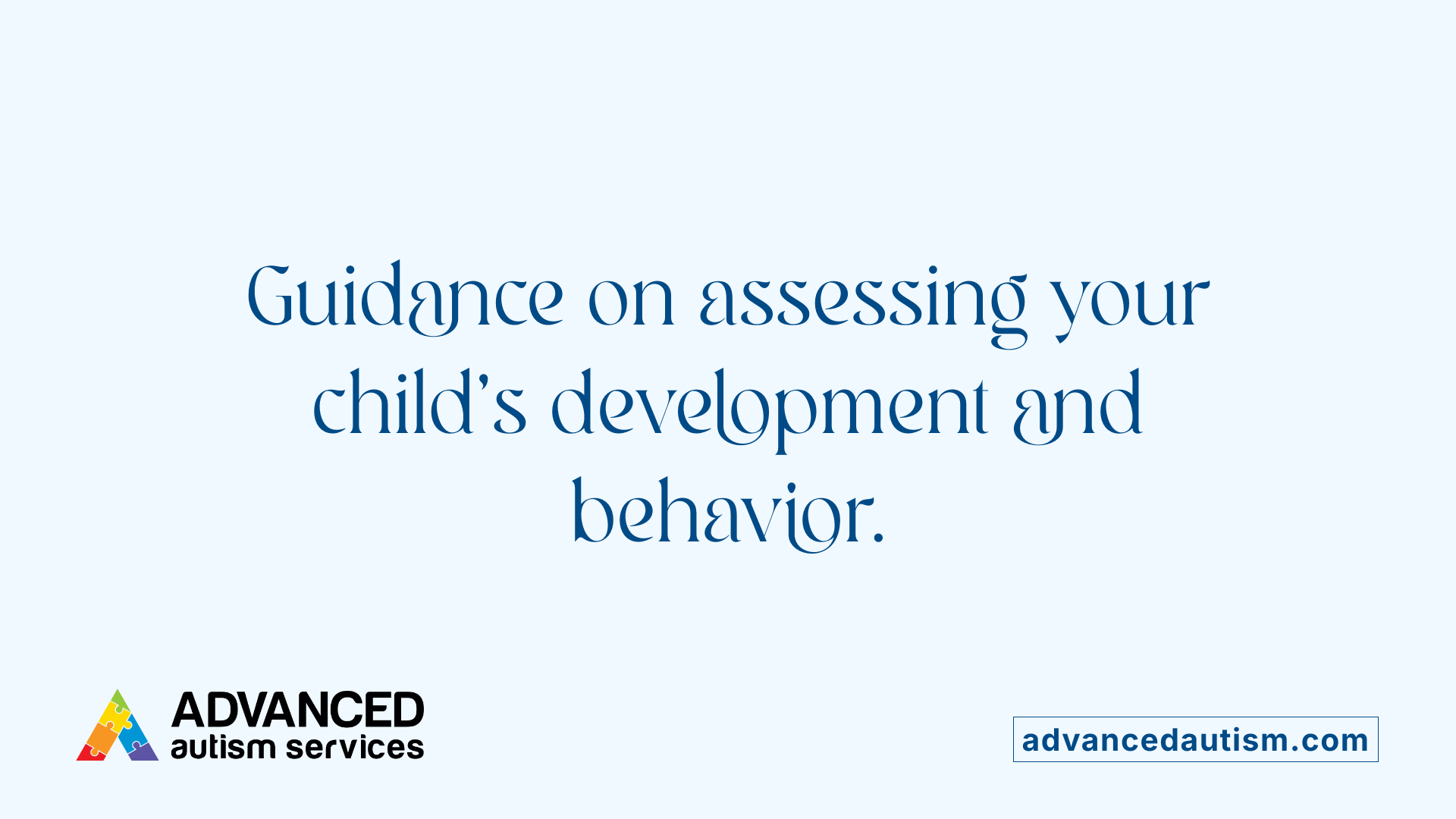
Monitoring developmental milestones
Observing your child's growth across key developmental milestones can provide early clues about autism. For example, most children begin to respond to their name by around 12 months and use simple words by 16-24 months. Delays in these areas, along with limited eye contact or little interest in social interactions, might signal the need for further assessment.
Signs to watch for in social and communication skills
Children with autism often exhibit challenges in social communication from a young age. These can include not responding to their name, avoiding eye contact, and showing a lack of facial expressions that match emotions. They might also struggle with understanding body language, responding in unusual ways, or repeating phrases without understanding their meaning.
Repetitive behaviors such as hand-flapping, spinning objects, or fixations on specific details are common. Many children may not engage in pretend play or share interests by pointing or showing objects, activities that typically develop with age.
Importance of early screening and professional evaluation
Early screening plays a vital role in identifying children who may have autism. Tools like the Modified Checklist for Autism in Toddlers (M-CHAT-R) involve a series of questions about behavior and can indicate the need for a professional evaluation.
If screening results suggest a high risk for autism, or if you notice persistent concerning behaviors, consult a healthcare professional promptly. An accurate diagnosis, based on behavioral observation and developmental history, allows for early intervention, which can significantly enhance social, behavioral, and communication skills.
Recognizing early signs — such as reduced response to social cues, limited gestures, and repetitive movements — can lead to timely support and better outcomes for your child.
Supporting Children with Autism and Early Interventions
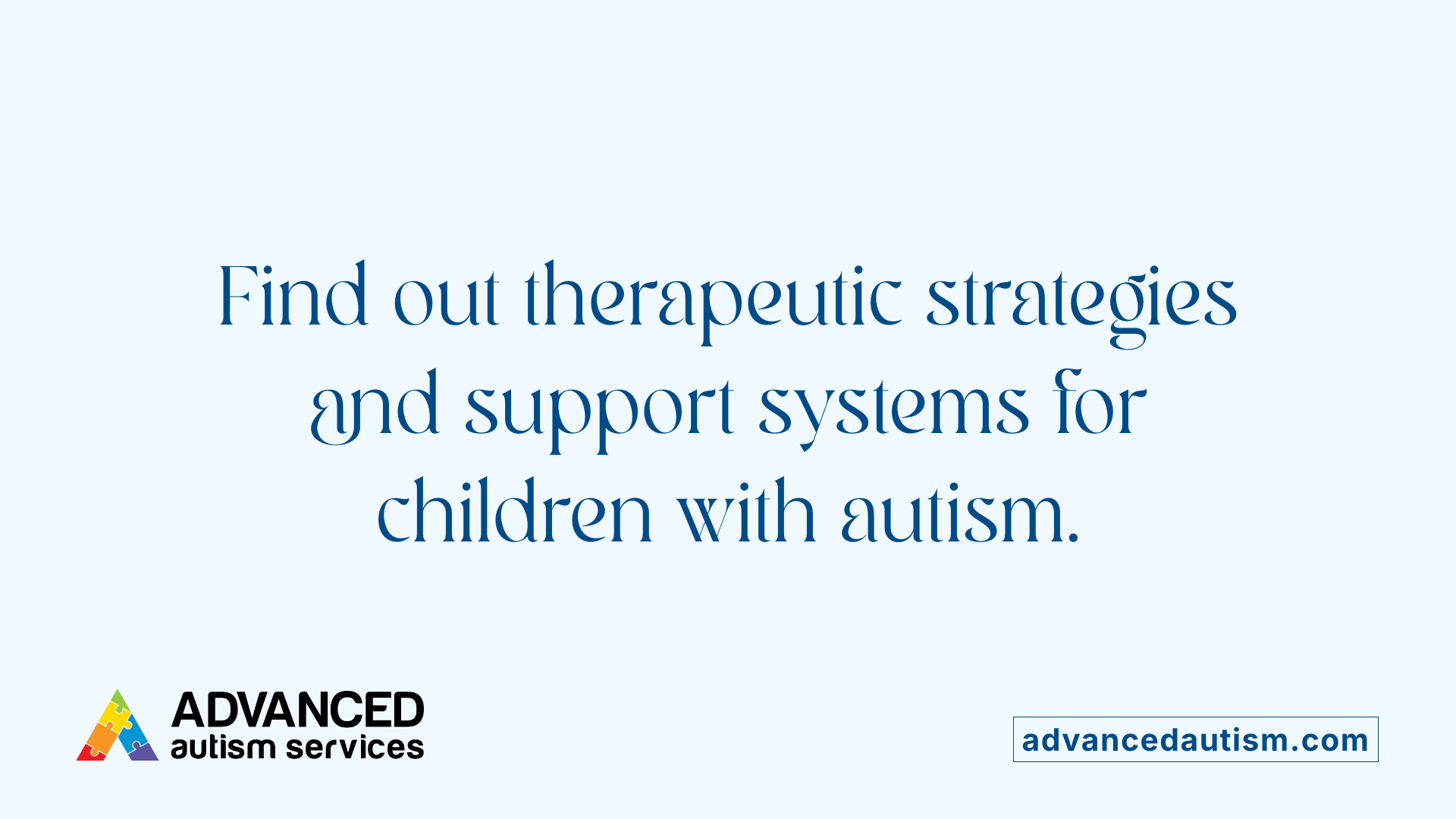
What behavioral therapies are available for children with autism?
Behavioral therapies are widely used to help children with autism develop social, communication, and behavioral skills. Applied Behavior Analysis (ABA) is one of the most common approaches, using positive reinforcement to encourage desired behaviors. Techniques such as Picture Exchange Communication System (PECS) and social skills training are also beneficial. These therapies are tailored to each child's needs and can significantly improve their ability to communicate and interact.
How does educational support aid children with autism?
Educational support plays a crucial role in fostering learning and development. Many children with autism benefit from structured teaching methods, visual supports, and individualized education programs (IEPs). Schools often incorporate strategies like visual schedules, quiet spaces, and sensory accommodations to create a supportive learning environment. Early intervention in educational settings can promote academic skills and help children gain independence.
How can co-occurring conditions be managed?
Children with autism often experience other conditions such as ADHD, anxiety, sleep difficulties, or epilepsy. Managing these requires a comprehensive approach involving healthcare professionals. Medications may be prescribed for some conditions, while therapy and lifestyle adjustments can address others. Regular assessment ensures that both autism-related challenges and co-occurring issues are effectively supported, leading to better overall well-being.
| Support Strategy | Examples | Additional Details |
|---|---|---|
| Behavioral therapies | ABA, PECS, social skills training | Focuses on reinforcing positive behaviors and communication |
| Educational support | Visual schedules, IEP, sensory-friendly classrooms | Customizes learning to each child's needs |
| Managing co-occurring conditions | Medication, therapy, lifestyle changes | Aims to improve daily functioning and comfort |
Early interventions and tailored support are essential for helping children with autism thrive. Recognizing the importance of therapy, educational adjustments, and managing co-occurring issues can help maximize their potential and quality of life.
Autism Spectrum Disorder in Adulthood and the Value of Early Support
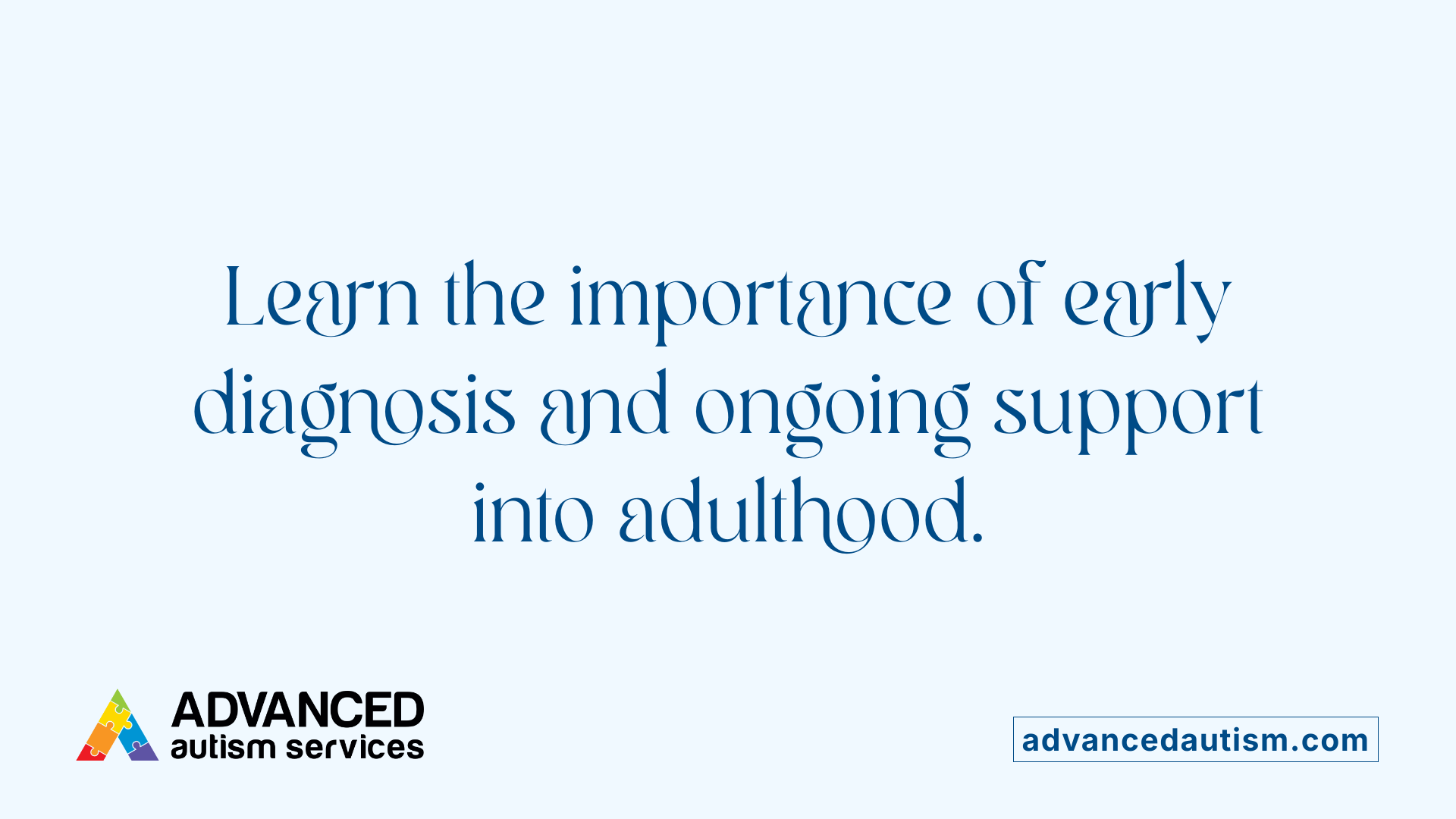
Do autistic traits persist into adulthood?
Many individuals diagnosed with autism continue to experience its features throughout their lives. Traits like social communication difficulties, restricted interests, and repetitive behaviors often persist, although their intensity and how they manifest can change over time. Some adults may develop coping strategies that help them manage certain challenges, but core characteristics generally remain.
What challenges do autistic adults face?
Autistic adults often encounter difficulties in social interactions, employment, and daily living. They may find it hard to interpret social cues, form and maintain relationships, or navigate unfamiliar environments. Sensory sensitivities can also cause discomfort in noisy or bright settings. Additionally, stress or anxiety may become more prominent, sometimes leading to mental health issues like depression.
Why is early diagnosis and intervention so important?
Detecting autism early allows for timely support that can significantly enhance quality of life. Early interventions—such as behavioral therapies, social skills training, and educational support—help children develop crucial skills and adapt more effectively as they grow. These supports can reduce maladaptive behaviors and improve communication and social engagement, paving the way for greater independence and confidence in adulthood. Recognizing signs early and accessing appropriate services create a strong foundation for lifelong development.
Summary and Takeaway for Parents
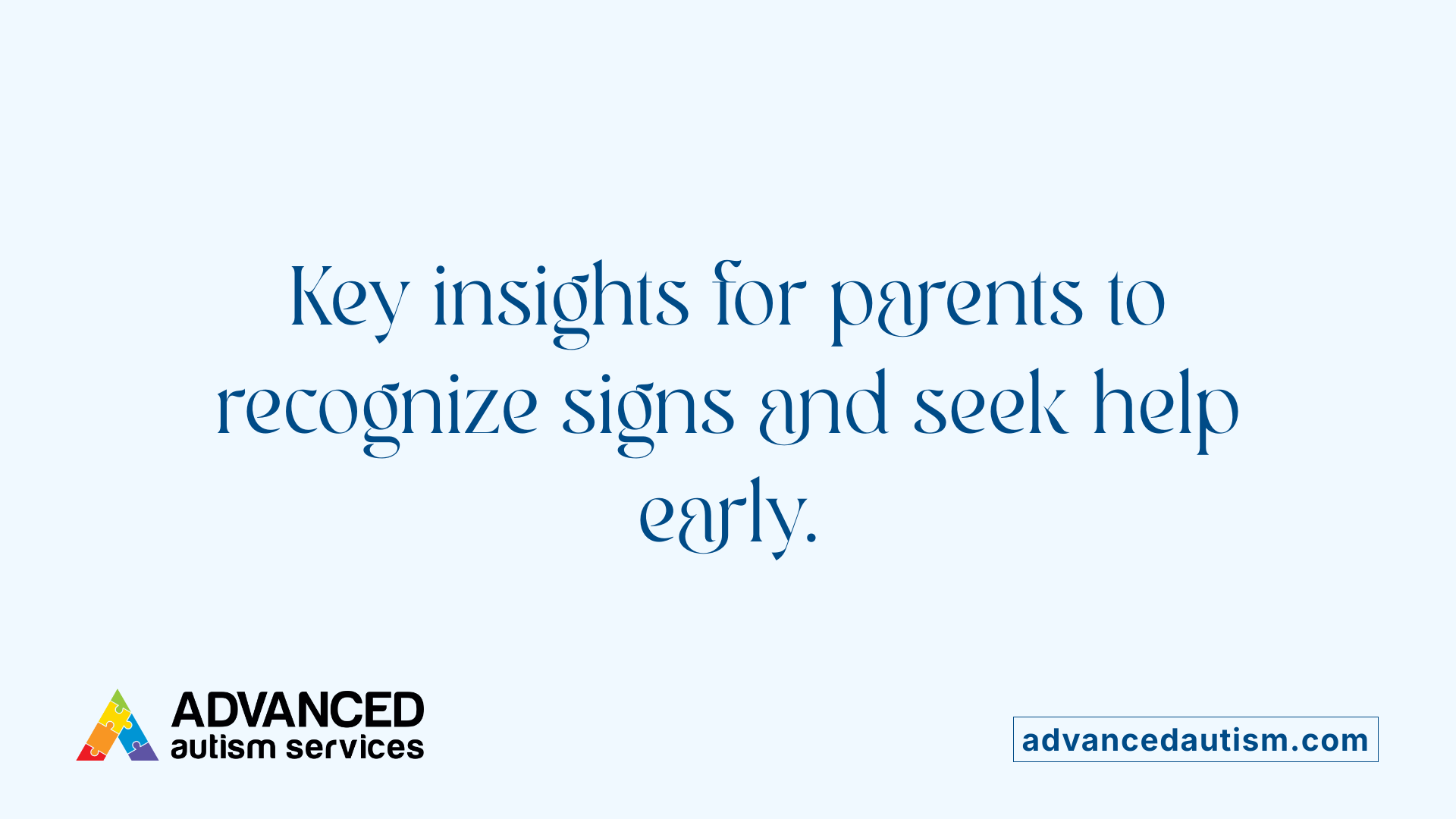
Recognizing signs early
Being aware of the early signs of autism can make a significant difference. In infants, signs might include reduced eye contact, lack of response to their name, limited facial expressions, and repetitive movements such as hand-flapping or rocking. Some children may not engage in typical social behaviors like smiling back or sharing interests through pointing. These signals often appear before age 2, but sometimes even earlier. Parents should observe if their child shows unusual sensitivities to sounds, lights, or textures and whether they seem less interested in social interactions.
Seeking professional help
Early diagnosis is crucial to accessing supportive interventions that can improve a child's development. If a child displays multiple signs of autism, parents are encouraged to consult healthcare professionals for comprehensive assessments. Screening tools like the Modified Checklist for Autism in Toddlers — Revised (M-CHAT-R) can be helpful initial steps, but a definitive diagnosis requires clinical evaluation by specialists. Starting support services early, such as behavioral therapies and educational programs, can greatly enhance social, behavioral, and communication skills.
Understanding autism as a spectrum
Autism spectrum disorder (ASD) encompasses a wide range of traits and abilities. Some children may show profound challenges, including non-verbal communication and cognitive impairments, while others are highly verbal and perform well academically but struggle with social cues or sensory sensitivities. Recognizing that autism manifests differently in each individual helps foster understanding and acceptance. Supporting children with diverse needs involves tailored interventions, patience, and reinforcing their strengths.
| Aspect | Common Signs | Developmental Variability | Support Strategies |
|---|---|---|---|
| Social Interaction | Limited eye contact, lack of response to name, poor facial expressions | Signs can appear from infancy to early childhood; some improve over time | Early intervention, social skills training, visual supports |
| Communication | Delayed speech, echolalia, unusual intonation | Some may develop speech later, others remain non-verbal | Speech therapy, alternative communication methods |
| Behaviors & Interests | Repetitive movements, fixating on specific topics, routines | Intensity varies; some children develop fewer behaviors with age | Behavioral therapies, sensory integration therapy |
| Sensory Sensitivity | Over- or under-reactivity to stimuli, aversion to textures or sounds | Can be present from early childhood | Sensory accommodations, calm environment |
Understanding autism as a spectrum and recognizing its signs early empowers parents to seek timely help, leading to better outcomes for children. If there are concerns, consulting with healthcare professionals experienced in autism diagnosis remains the essential next step.
Empowering Parents Through Knowledge and Support
Understanding the signs and characteristics of autism spectrum disorder is vital for early detection and intervention. Recognizing early signs and seeking professional evaluation can open doors to support that enhances a child's development and quality of life. Remember, autism is a spectrum, and each child's journey is unique. With the right resources, therapies, and understanding, children with autism can thrive and lead fulfilling lives. Stay informed, observant, and proactive—your awareness can make a meaningful difference.
References
- Could my child have autism spectrum disorder?
- Signs of autism in children
- Signs that a child or adult may be autistic
- [Self-Test] Is My Child Autistic? Early Signs of Autism ...
- Early Signs of Autism
- Autism spectrum disorder - Symptoms and causes
- Autism Test for Kids and Teens
- Signs and Symptoms of Autism Spectrum Disorder
- Autism Spectrum Disorder (ASD) Symptoms & Causes
- M-CHAT-R (Modified Checklist for Autism in Toddlers ...







